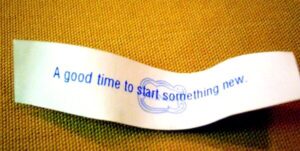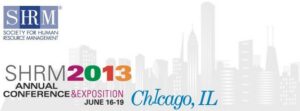
How To Skip The Negative Feedback “Sandwich”
Negative performance feedback is tricky to give and receive — but hiding the message doesn’t help. Try these 5 ideas for a more satisfying outcome

Negative performance feedback is tricky to give and receive — but hiding the message doesn’t help. Try these 5 ideas for a more satisfying outcome

Think you’re ready to quit your job and strike out on your own as an entrepreneur? There may be a better path to your professional goals…

Do accepted brainstorming practices work as well as we think? How can teams do a better job of sparking creative ideas in today’s workplace?

Employers are on a mission to reignite passion and productivity in the workplace. How can they make that happen with existing talent?

Do you see a talent tsunami ahead? What is your organization doing to protect your investment in employee morale and performance?

Finding the next superstar employee can be a challenge. It can start by hiring solid interns, since they often move to full-time positions. But what traits should you look for?

“Big data” is all the rage. But what does it really mean, and how can HR professionals apply if effectively for better business decisions? #TChat takes on the big questions about data…

What can today’s graduates expect as they enter the work world? The TalentCulture community talked about this and more during a whirlwind week at #SHRM13…

The TalentCulture community is heading to Chicago — along with 18,000 HR professionals who are gathering to discuss the future world of work. Join in, as we work the floor at #SHRM13!

Customer and employee engagement are similar in many ways. Here’s how customer experience disconnects can inspire better employee communications…

How can organizations encourage collaboration? And why does it matter? The TalentCulture community opens up about open leadership…

How can we create a more engaging experience for tomorrow’s workforce? And what do today’s graduates see ahead in their careers? We’ll explore this and more, LIVE at SHRM13. Join us!

What is an “open” leader — and why is that concept vital in the workplace? That’s our focus at #TChat forums this week, as we explore the intersection of management, learning and collaboration

What does a future-ready workforce look like? Business collaboration and learning expert Dan Pontefract says it features a special kind of leader

When you put the right information in the hands of business managers, Employee Success will follow. Consider these 3 ways to make it happen…

How can business apply social tools and techniques to connect with those in need – around the corner or around the world? Our community exchanges ideas with experts on “social good” in the workplace…

Community — that word means so much more to me today than it did only one week ago. Some takeaways I won’t forget from the Boston bomb attack…

Social media seems like the perfect way to foster relationships between business and non-profit organizations. But results are mixed. What’s missing? How can companies benefit from helping?

Today’s workplace is no place for age-based stereotyping. And yet, negative stereotypes persist. How can we break free from these assumptions that threaten professional relationships and business performance?
“Engagement performance.” What does this term mean, and why is it essential to business learning and transformation in an era of social media? Video preview with Tim McDonald and Michael Clark…
Innovation isn’t magic. It’s the result of a culture designed to encourage fearless pursuit of fresh ideas – and the willingness to embrace failure as part of the process. It comes from conscious effort to gather input from a diverse and dedicated workforce…
Feedback is essential for professional assessment, coaching and development. But what forms of recognition matter most – and how can leaders make recognition a more effective tool to improve performance?
The holidays are upon us again! So here at TalentCulture, we’re tapping into social business leaders at Mashable and HuffingtonPost/AOL to discuss the important relationship between corporate culture, community engagement and responsible leadership – in a global sense, as well as around your local watercooler…
As a flood of recent veterans return from tours of duty in Iraq and Afghanistan, they bring specialized skills, professionalism and commitment to the workforce. So why are employers slow to hire those who’ve served in the military? What should recruiters and business leaders do to dispel myths and leverage this strong talent pool?
In a time of historic unemployment, with veterans returning from protracted wars, the TalentCulture community takes a hard look at how America can leverage the talents of those who have served our country…